- Administrator
- Albums and Singles
 Despite (or perhaps because of) a 25 year long career playing with Einstürzende Neubauten, Mania D and Malaria! as well as running a successful record label, she has never put out her own album. I Put a Record On is a far cry from her previous work with the other groups: it captures the modern Berlin's new slick, chic culture as opposed to the decay and geographical isolation that gave birth to the Neue Deutsche Welle.
Despite (or perhaps because of) a 25 year long career playing with Einstürzende Neubauten, Mania D and Malaria! as well as running a successful record label, she has never put out her own album. I Put a Record On is a far cry from her previous work with the other groups: it captures the modern Berlin's new slick, chic culture as opposed to the decay and geographical isolation that gave birth to the Neue Deutsche Welle.
Monika Enterprise
I was expecting I Put a Record On to be more upbeat and clubby, instead Gut has gone for a more laid back approach and released an album that Portishead might make if they were Berliners. I get the feeling that Gut was aiming to create an album that could be used to soothe ringing ears after a hard night out. The beats are simple: strong enough to get a body moving in sync but soft enough to prevent full on dancing. The pulse of Berlin's night life is detectable on the first few songs, especially the terrific track "The Land," but the night quickly swallows up the life as the album gets sleepier and sleepier. Gut's vocals are hushed and nearly always tweaked with effects. At first I thought she was trying to hide her singing but on closer inspection I think the effects are more for smoky ambience. The way the album winds down is relaxing, by the end of the disc I am ready to curl up and sleep (and not out of boredom).
The best songs occur towards the end of the album when Manon P. Duursma, one of Gut's old bandmates from Malaria!, contributes to the music (although little traces of Malaria! are present). "Pleasuretrain" and "The Wheel" are both great tracks, the latter captures the sound and feeling of being in a nightclub under tropical waters that Gut strove to create with her Ocean Club project. The discs that resulted from that project (Members of the Ocean Club) is quite similar in tone to this album. However, instead of the late evening, early night buzz of the Ocean Club, I Put a Record On is a collection of songs for that late night, early morning come-down.
While I Put a Record On is not as innovative or groundbreaking as some of Gut's earlier endeavours, it is still a good record. It does something that many albums do not do and that is capturing the feeling of a city accurately and vividly. Looking at the sleeve and listening to I Put a Record On immediately makes me think of strolling through Mitte on a late summer evening. Maybe it is my soft spot for Berlin coloring my view of this album but I cannot help but be impressed by Gut's elegant and charming songs.
samples:
Read More
- Administrator
- Albums and Singles
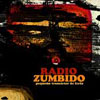 A stylistic mish-mash of styles, cultures, and sounds, Radio Zumbido create the perfect documentary soundtrack for a film that does not exist. My first thought on a quick sampling of this disc was old Bomb Squad era Public Enemy.
A stylistic mish-mash of styles, cultures, and sounds, Radio Zumbido create the perfect documentary soundtrack for a film that does not exist. My first thought on a quick sampling of this disc was old Bomb Squad era Public Enemy.
Not there was a real similarity in content or attitude with the Bomb Squad, but the dense fog of samples and loops are nearly impossible to isolate yet coalesce together into a compelling mix. Radio Zumbido is Juan Carlos Barrios (and in this case, "and friends"), who consciously avoided samplers in favor of analog tape loops, keyboards, guitars and percussion (all played by Barrios). It's surely this approach that leads to the human, organic feeling that pervades the album. There was an intent to be "lo-fi" and it works very well.
While in some ways this could be considered "world music" it lacks the distinct cultural exploitation often inherent in that genre. Instead of simply loading up on native instruments and foreign language vocals, the album instead allows those elements of the surrounding culture to seep into the mix while still maintaining its own edge and style. Recorded at various times in Barcelona and Los Angeles, the sounds of the surrounding Latin culture permeate the album, but it never feels insincere. In some ways parallels could be drawn stylistically to Beck's Guero album, but in this case the Latin elements are far more natural and less forced.
The album is all over the board in regard to style and genre, from the massive hip hop drums and wah-wah’ed guitars on the opener "Revuelta" that wouldn't sound out of place on a Beastie Boys release to the minimal 8 bit melodies of "Tun," the disc manages to scurry across a little bit of everything yet still feels like a coherent body of work. In contrast to the more experimental type pieces, "Dolorcito" and "Radio Frontera" feature prominent guitar melodies with an Eagles/Southern California type twang mixed with some dubby percussion loops and effects.
There is a definite theatrical mood to the album, one of a documentary that instead of singling out a culture to study on its differences, it focuses more on the universal qualities that everyone shares, regardless of geography or ethnicity. While one can question if such a documentary could actually exist, at least we have the soundtrack to it.
samples:
Read More
- Administrator
- Albums and Singles
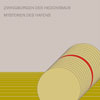 Die Stadt's reissue program of early Asmus Tietchens' early releases continues into its ninth iteration, this time focusing on two records from the late 1980s. Both differ greatly in their approach and are not equally compelling to these ears.
Die Stadt's reissue program of early Asmus Tietchens' early releases continues into its ninth iteration, this time focusing on two records from the late 1980s. Both differ greatly in their approach and are not equally compelling to these ears.
The disc is broken up into three long pieces, "Zwingburgen des Hedonismus," originally a one sided LP, is very cinematic, featuring early Fairlight sampling experiments focusing on piano and human voice along with sampled strings and wind instruments. It makes for an interesting experiment when placed in the context of its original release (as sampling technology was gaining a wider market), but beyond that it makes for little more than an interesting piece of soundtrack type music.
"Faircomp 1K" is an unreleased track of synthesized brass and string instruments that follow the same structure as "Zwingburgen des Hedonismus." Using a different pallet of sounds, this track calls to mind Carmine Coppolla's synthesized soundtrack to Apocalypse Now both in its analog electronic instrumentation, and sense of tension and fear present in the track. The composition works better when it is in this context as opposed to the sampled instrumentation in "Zwingburgen…"
The final track (two pieces combined) is 1988's "Bubendey Notturno/Ritual auf der Halde," originally appearing on a split record with Die Form entitled Mysterien Des Hafens. The split piece opens with a more traditional electronic synth sequence that continues to build as heavily reverbed and delayed synth lines weave in and around the mix. The last five minutes or so become extremely rhythmic, mimicking the 808 kick drum pulse of so many generic dance tracks, but here placed alongside a dense collage of synth lines that not clearly identifiable. This work feels very much in the vein of the early industrialists such as SPK and Cabaret Voltaire, and even some of the more obscure practitioners such as Maurizio Bianchi and Esplendor Geometrico.
Admittedly, the first track makes for a more interesting piece of experimentation rather than listening, as it does not really manage to keep the interest over time. The second track fares better, but the disc's real high point is the final track, a rhythmic industrial din in the classic sense.
samples:
Read More
- Administrator
- Albums and Singles
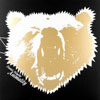 The mad man from the Pacific Northwest creates an album based solely on the sound of Native American percussion, with the processed results as wild as the roaring bear that adorns the album's sleeve.
The mad man from the Pacific Northwest creates an album based solely on the sound of Native American percussion, with the processed results as wild as the roaring bear that adorns the album's sleeve.
Daniel Menche has been involved in the experimental/noise scene for a number of years and still continues to change his style and approach, resulting in a massive body of work that never comes across as stagnant or dull. My previous exposure to his work has been of his more physical variety, being based on loops of contact mic'd metal percussion run through batteries of effects, and sound sourced from his own body. Hearing that this was a percussion centered album, I was curious as to how this instrument based approach would be, and I must say I'm quite thrilled.
The album opens with what amounts to raw percussion, no effects or anything, just the sound of the drum. The untreated percussion does not last, however, as Menche soon piles on the effects. The drum sounds are manipulated to resemble woodpeckers, gamelan percussion, etc. It is one of those albums that each listen brings a new revelation, a part of the track that wasn't heard the previous time that makes you wonder if that really is just the sound of a drum you're hearing.
You can hear a world of native percussion in Animality. Beyond the obvious Native American sounds, there is Indonesian gamelan, African ritual drums, Japanese Noh sounds, etc. It shows the universal and primitive animal nature of percussion. Although Menche is often associated with the so called "noise" scene, Animality never reaches the ear-shredding harshness associated with that genre, it has so much more depth than just shrill feedback and electronic roars. The sound of percussion from all over the world is on this album, even if it is just Mr. Menche, a drum, and a bank of effects. It's a brilliant disc right down the the excellent packaging: a cardstock folder that the CD "pops up" from upon opening. Both the label and Menche get high praise.
samples:
Read More
- Administrator
- Albums and Singles
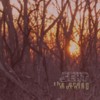 Inspired by a German audiobook of Ray Bradbury's The Martian Chronicles, the tracks on this album suitably evoke contact with distant landscapes that may or may not be inhabited. An eerie otherness pervades these songs, as if anxiously awaiting the arrival of alien emissaries.
Inspired by a German audiobook of Ray Bradbury's The Martian Chronicles, the tracks on this album suitably evoke contact with distant landscapes that may or may not be inhabited. An eerie otherness pervades these songs, as if anxiously awaiting the arrival of alien emissaries.
Although at first it may seem as if the drone-heavy songs on this album are fairly static, closer listening reveals turbulent nuances unfolding beneath the surface. In "Valles Marineris," it's as if some scientific reconnaissance device is transmitting data streams in the background, providing statistical information to complement the mixture of awe and unease. "Olympus Mons" contributes some light mechanical rhythms and a brief, repeating harmony before the ambient soundscape converges once again. The atmosphere builds throughout this track like a dense, aural fog in which shapes dart in the mist, just beyond reach.
A rhythmic pulse also infiltrates "Way in the Middle of the Air," but rhythm finally dominates in "Cydonia" with a loop that could have been created with battered rocks. As a counterpart, two alternating tones emerge to form a semblance of melody. The last track, "Chryse Planitia," is the most exhausting at nearly 20 minutes in length, but it also has the most rewarding complexity. Starting with a sort of sticky static, the familiar overtones appear but this time they're accompanied by a delicate mirage of shimmering microtones. A commanding machine-like swath overpowers the others, pulling the song toward a conclusion. There's quite a bit seething underneath the main sounds here that, as is the case with the other tracks, benefit by a bit of volume.
There's no such thing as static motion on this disc. Like the best ambient music, each track here constantly evolves, transporting us as far off-planet as they're willing to go.
samples:
Read More
- Administrator
- Albums and Singles
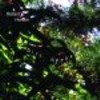 Robert Horton weaves together drones, field recordings, improvisations on homemade instruments, and digital manipulations in the creation of this excellent, otherworldly recording. His explorations go in such a variety of directions and altered states that it is hard not to be a little awestruck in their wake.
Robert Horton weaves together drones, field recordings, improvisations on homemade instruments, and digital manipulations in the creation of this excellent, otherworldly recording. His explorations go in such a variety of directions and altered states that it is hard not to be a little awestruck in their wake.
The album opens with the incantation "Magus." Joining its harrowing drones are metallic strings and a horn, though the true source of the latter elements are little difficult to discern considering how frequently he creates his own instruments. After that attention-grabbing opening track, he takes it a step further with the trance-inducing "Long Period Event," a quasi-mystical devotional that inhabits its own reality altogether.
One of the things that Horton does well is the way he makes music from non-musical objects. He creates "Fire" from running a contact microphone over a wood stove while on "Musclefish" he plays with raw, uncooked noodles. Some of these tracks benefit from some digital manipulation afterwards, but the editing is so subtle that it leaves no obvious fingerprints. His own four-stringed invention, the boot, shows up on the harmonic-obsessed "What Is Left Unsaid," and the album's title track reveals his admiration for the slide guitar. Closing the disc is "Tuning Emperor Norton" in which Horton adds a khaen to the time-stretched drone of the orchestra tuning up for Gino Robair's opera about San Francisco's Emperor Norton.
This meditative piece is a fitting finale to a cycle of songs that continually venture into cathartic regions. Horton covers a lot of territory with this album, hazing it all with a gauze of glory and wonder.
samples:
Read More
- Administrator
- Albums and Singles
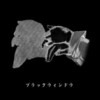 The latest installment to spill from Andrew Liles' ambitious and generous Vortex Vault series casts Liles as the ringleader of a black magic vaudeville act. Theatrical and playfully whimsical, this multilingual, dialogue-laden album is a striking release that shifts modes effortlessly, revealing new finds from Liles' unlimited bag of tricks at every turn.
The latest installment to spill from Andrew Liles' ambitious and generous Vortex Vault series casts Liles as the ringleader of a black magic vaudeville act. Theatrical and playfully whimsical, this multilingual, dialogue-laden album is a striking release that shifts modes effortlessly, revealing new finds from Liles' unlimited bag of tricks at every turn.
The human voice, both speaking and singing, forms an integral part of this album. The unpredictable way it's interspersed with music and the different languages that appear and vanish gives the impression that there’s some bizarre stage performance in progress, even if I'm at a loss to explain what it's about. The vocals range from the spoken word to the operatic, and the effect is jarring only when it’s intentional.
Musically, there are plenty of fascinating objects to behold in this cabinet of curiosities. "Bengali Bergman" has dirge-like strings and a beguiling Eastern accompaniment. Hand drums make up a large part of "Quicksand Mudslide" as some feline entity patrols the border. This piece is interrupted by startling electrical zaps as if some modern alchemical wizard is channeling the secret energy of the universe. It‘s one of the most arresting moments on the disc. Also surprising, albeit in a different sense altogether, is the song "God Doesn’t Fuck About," a percussive jazz funk so convincing that I momentarily forgot what album I was listening to until the airplane rush of an ending reminded me.
Although a few recurring titles appear sporadically throughout the album, they are not simply multiple versions of the same song. Instead, they are different enough from each other to suggest they are somehow parts of a related story or theme, even though the instrumentation and mood are often dissimilar. Yet it's a tactic that works in the service of the unexpected.
The breadth of this album and its beautiful presentation really make it an impressive package. Even the devilishly genial hand-puppet shadow grinning on the cover reflects the fun to be found within. Liles and Beta-lactam Ring are raising the bar ever higher with this series, and they both deserve a lot of credit for making these incredible recordings available.
samples:
Read More
- Mike Barrett
- Albums and Singles
Lower Lip Interface is pretty much an album of straight up goth-club dance music. It is heavy on the distorted synths, full of zombie and horror movie samples, and even the song titles are tongue in cheek occult refferences ("Caballa Smells Funny," "A Caine in the Brain"). Architect has a tight formula and he does it well, but as formulas go he just holds to it a little too much. He heavily uses the same two-step break, which gets pretty old after a while, especially at the slower tempo he predominantly uses.
Out of the 13 tracks on here, about five are great. "Stairway" is two of them, one being the exciting original and the other being Nebulo's remix that he thoroughly makes his own. The rest is pretty much filler. Not to say that anything on this album is bad, but it feels like there's a little too much music for too little original material. Despite a few contemporary flashes, this album could have come out ten years ago.
Read More
- Administrator
- Albums and Singles
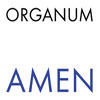 The second installment in a proposed David Jackman trilogy (preceded by Sanctus, and to be completed with Omega) lives up to its name with a spiritual recording of Hammond organ, tower bell, gong, and processed voices.
The second installment in a proposed David Jackman trilogy (preceded by Sanctus, and to be completed with Omega) lives up to its name with a spiritual recording of Hammond organ, tower bell, gong, and processed voices.
David Jackman began Organum in the early '80s as an outlet for noisy experimentation consistent with the early industrial pioneers like Einstürzende Neubauten and SPK. Characterized by scrapes and grinds and other unpleasant sounds generated by raw metal, it has since been refined and developed into a more diverse body of work. Organum has been extremely prolific ever since its inception in 1983. Even after all of these years Organum continues to release new material and reissue out of print works, of which Amen is the former.
Consisting of two tracks both clocking in at 22 minutes, there is a notable spiritual sound resonating throughout the recordings that is not blatantly religious, though musically it could be linked to what is usually attributed to Christian church instrumentation. It is an overall feeling of enormity and reverence akin to Albert Ayler's work, which also conveyed this sense of the holy and majestic without being overt or denominational. The two tracks are based upon long passages of sustained organ drone that covers both the higher and lower registers without a single break, interspersed by brief processed vocal snippets and bells. These motifs repeat through both tracks, which resemble a single piece broken up by an intermission as opposed to two separate works.
As a work, Amen is rather simple and repetitious, but it is within a context where repetition is an asset rather than a liability. The fact that the sound repeats consistently has a calming and hypnotic effect, transcending the notions of time. Amen is the sound of eternity and infinity, characterized by the only text in the minimalist digipak other than the artist and title, "Unto the Aeon of Aeons."
Jackman himself has described this as being part of a "holy"/historical trilogy, which is very appropriate. He has refused to elaborate on the “holy” part of this description on the official Organum website, which is also fitting. I mentioned that it has more of a spiritual sound than a religious one previously, because though the instrumentation is more consistent with what westerners would perceive as Christian church based, but the overall ascetic approach to instrumentation and structure has a notable Buddhist and Zen feel as well. The sound transcends religion into pure spiritualism: Amen is a work that is simultaneously relaxing and utterly compelling.
samples:
Read More
- Administrator
- Albums and Singles
Von Suedenfed successfully leads Mouse on Mars and Mark E. Smith in new and unexpected directions where they've never gone as separate entities. Tromatic Reflexxions, has the energy of "a hybrid band -- a futuristic band playing grime or ska or soca like a pirate radio station" with electro, dubstep and disco thrown into the mix. It combines the genre-smashing attack of early-millenia club music with Mark E. Smith's free-associating visionary wordplay.
Tracklisting is as follows:
1. Fledermaus Can't Get Enough
2. The Rhinohead
3. Flooded
4. Family Feud
5. Serious Brainskin
6. Speech Contamination/German Fear Of Osterreich
7. The Young The Faceless And The Codes
8. Duckrog
9. Chicken Yiamas
10. That Sound Wiped
11. Jbak Lois Lane
12. Dearest Friends
Read More
- Administrator
- Albums and Singles
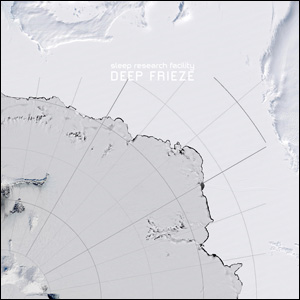
Artist: SLEEP RESEARCH FACILITY
Title: Deep Frieze
Catalogue No: CSR72CD
Barcode: 8 2356602372 2
Format: CD in jewelcase with foldout map / booklet
Genre: Dark Ambient
Shipping: 12th April 2007
Ultra deep, glacial Dark Ambient, based around Antarctic co-ordinates.
The polar regions are awe-inspiring environments of inhospitable minimalism, and at the same time there's a beautiful serenity to be found in their uncharted bleakness. There's a powerful purity and a timelessness to be found there; snow which has lain un-trampled for millennia and ice which formed eons ago; mountain ranges and deserts and rivers to be found if you look.
'Deep Frieze' is SRF's second album for Cold Spring and here deep, resonant, abyss-like drones shine forth from icy chasms below.
MP3 Sample: "79ºS 83ºW "�
Read More

